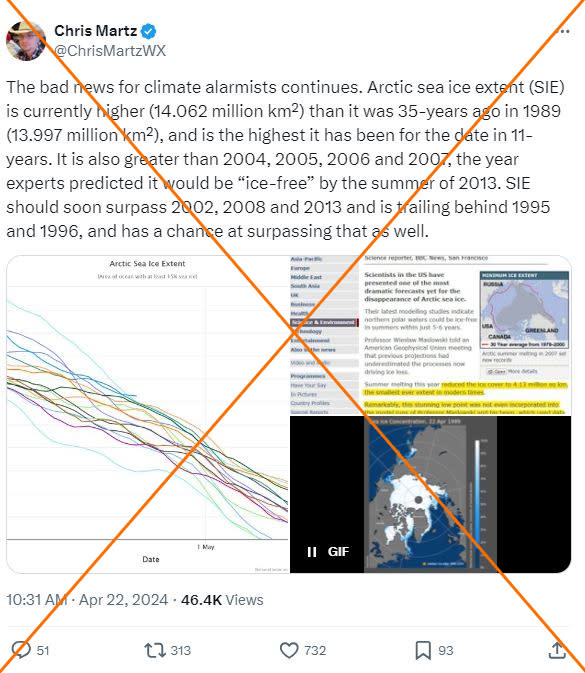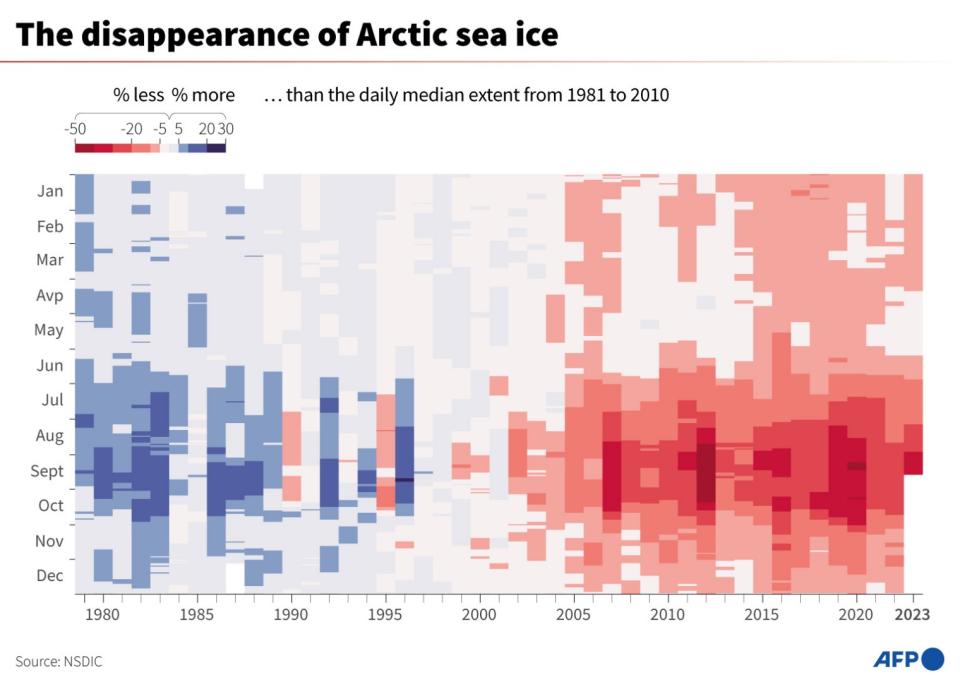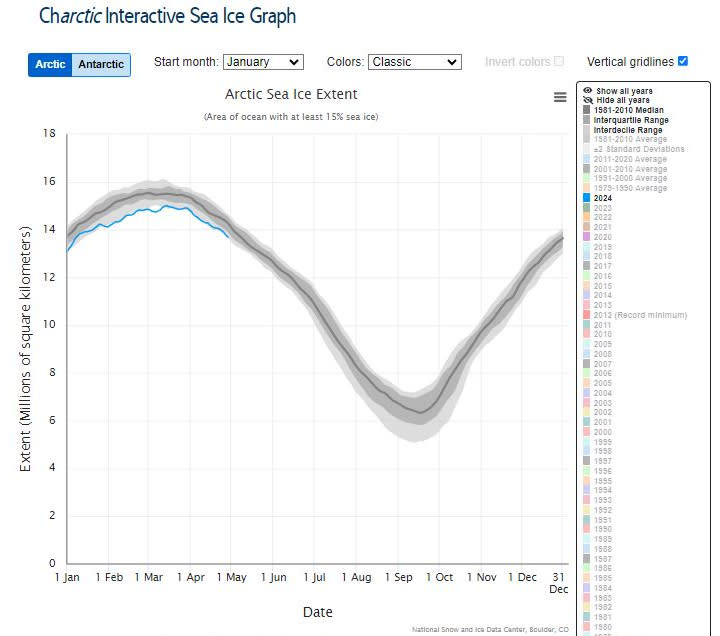US student misleads on Arctic sea ice data to deny warming
As the Arctic region continues to warm due to human-caused climate change, a social media post claims sea ice is higher today than 35 years ago. This is misleading; experts told AFP it cherry-picks data not representative of long-term trends showing sea ice extent in decline.
"The bad news for climate alarmists continues," says Chris Martz, a meteorology student at Millersville University of Pennsylvania, in an April 22, 2024 post on X.
"Arctic sea ice extent (SIE) is currently higher (14.062 million km²) than it was 35-years ago in 1989 (13.997 million km²), and is the highest it has been for the date in 11-years."
Martz accurately cites satellite data from the National Snow and Ice Data Center (NSIDC), and compares two specific dates -- April 22, 1989 and April 21, 2024 -- to back his claim (archived here).

Sea ice is frozen ocean water distinct from icebergs, ice sheets, ice shelves and glaciers (archived here). The United Nations Intergovernmental Panel on Climate Change (IPCC) has documented its decline.
AFP has previously debunked posts disputing that fact. Martz's claim is similarly misleading.
"Picking a single day from two different years is cherry-picking," Walter Meier, a senior research scientist at NSIDC (archived here), told AFP on April 30.
"The sea ice varies from year to year and from season to season. So picking a couple days from a couple or a few years doesn't tell us anything about the long-term change in the ice cover."
'Unprecedented rate'
Multiple studies have shown Arctic sea ice extent is in steep decline compared to historical levels (archived here and here).
NASA data indicates that since 1979, Earth has shed sea ice at an average annual rate of 35,000 square kilometers (13,500 square miles) -- an area comparable to the state of Maryland (archived here).

"The long-term trend in Arctic sea ice extents continues to be downward, with many impacts to the polar environment and ecosystem," Claire Parkinson, a now-retired NASA climatologist, (archived here) said April 30, 2024.
Melinda Webster, a research scientist at the University of Washington's Polar Science Center (archived here), agreed.
"Arctic sea extent is declining at an unprecedented rate relative to the past centuries," she told AFP on April 30.
"Even when considering measurement uncertainties, it is clear that as atmospheric carbon dioxide concentrations increase, global average temperature increases -- and Arctic sea ice extent decreases."
Seasonal variations
Arctic sea ice extent drastically fluctuates between winter and summer, peaking around March before melting and hitting its lowest point around September (archived here).
"This time of year is particularly not a great time to try to compare between different years because the ice that is melting is thinner, younger ice that is more prone to influence by the weather," NSIDC's Meier told AFP.
He said scientists typically analyze summer ice cover to determine the extent to which it is melting and how thick it remains.
"It is clear that the sea ice is much thinner than it used to be, even back in 2004-2007," he said.
Experts at the European Union's Copernicus observation program said in an email that sea ice extent for just the month of April was still lower than the 1981-2010 median (archived here).

The trend of declining ice further accelerates warming, scientists say.
"Lessened sea ice coverage means less reflection of the Sun's radiation and hence further warming," said Parkinson, who studied the Arctic region for decades.
The IPCC projects the Arctic region will see its first sea ice-free summer before 2050 (archived here). The changes have already led to a significant impact on marine life in the region.
More of AFP's reporting on climate misinformation is available here.

